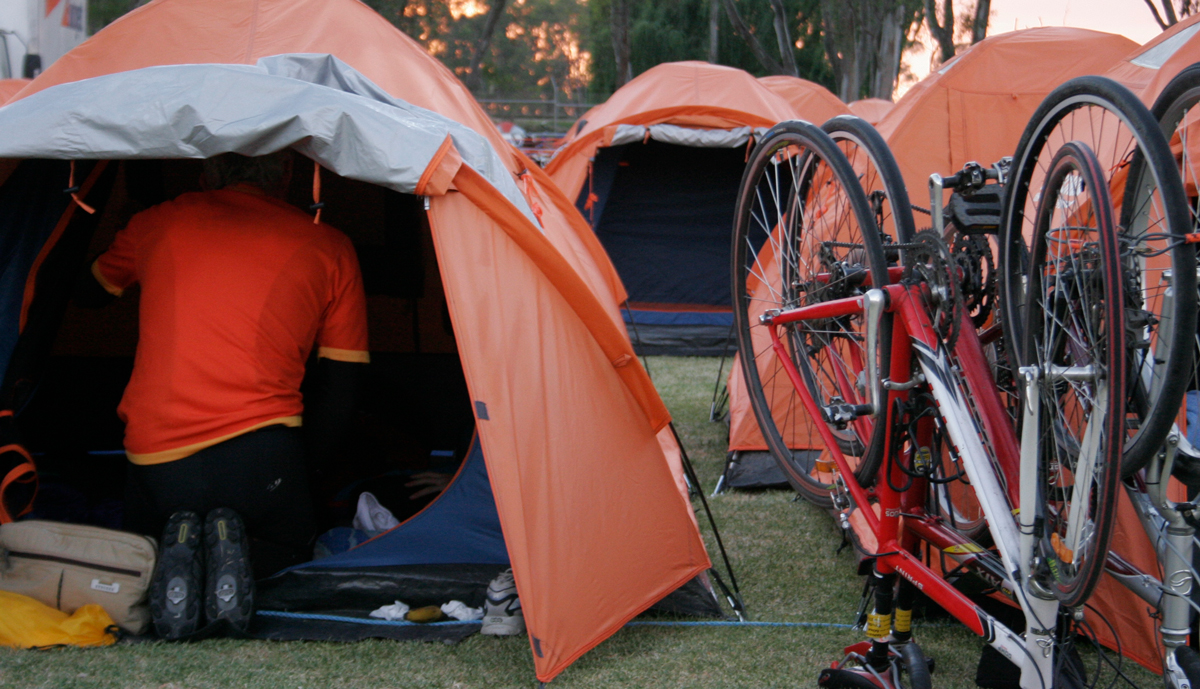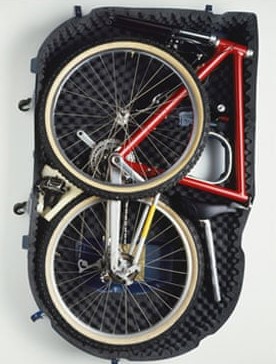Great Vic Bike Ride
Packing guide
Knowing what to pack can be the hardest part of any trip. We’ve compiled some top tips and handy information to help make packing a breeze for this year’s Great Vic.
Personal gear
Here’s our basic guide to packing your bags for the Great Vic. You can add to this list of recommendations as you please.

- Tent, bed roll or mattress and sleeping bag
- Quick-dry towel
- Toiletries
- Thongs
- Warm clothes
- Waterproof gear
- Suitable cycling clothes (be prepared for all weather!)
- Plate, bowl, mug, cutlery and tea towel
- Torch or head lamp
- Laundry supplies
- Hat, sunglasses and sunscreen
20kg weight limit guidelines
Rather than one 20kg bag, we ask that riders please bring two bags with a max. 10kg weight limit each
One of the great things about Great Vic is that everybody pitches in to help, including with luggage loading and unloading each day.
The 2 x 10kg bag approach is in line with our OH&S policy, and aims to reduce the risk for everyone who will be handling luggage – including the owner of the bag, their fellow riders and our team.
We recommend one bag for camping gear and one bag for personal items. As you will be expected to load and carry your own bags around the campsite, and set up your tent at each stop, we recommend packing as small and light as possible.
For the safety of all involved, bags identified as over 10kg will be tagged, and will not be handled by our team or fellow riders.
Riding gear
- Your bike – You won’t get very far without this! If you’re using our transport service, see information about how to pack your bike for our trucks in the drop down below.
- A helmet – It is mandatory to wear a helmet at all times when riding on the Great Vic. It is also the law when riding on all roads and paths in Victoria.
- Bike lights – A white one for the front and a red one for the back to use in dark conditions. Also remember a charger or spare batteries.
- Water bottles – While we have rest stops along the way, we encourage all riders to bring two water bottles, and have cages on their bike to carry them while they ride.
- Spare tyre tubes – Repair kit and bike tool. While we will have mechanical assistance on the ride it is a good idea to always have some spares on you.

Packing your bike
Preparing for bike transport
If you are using our bike transport services, please prepare your bike by turning and locking the handle bars and taking off your pedals. There will be mechanics on site on arrival day to help with any readjustments.
Using a bike bag or box
The following advice for bike packing is from a 2011 edition of Bicycle Network’s Ride On magazine.
You can normally scrounge a cardboard bike box from your bike shop, and for a fee, they may also pack it for you.
The standard way of packing is to remove the front wheel and pedals, drop the seat post down (or remove it), loosen the handlebar and turn it parallel to the frame, and take some of the air pressure out of the tyres.
You then have to fit it all in, and add padding to vulnerable parts. A spacer to go between the front forks is a good idea (ask your bike shop for one) and pad the bottom of the forks.
The rear derailleur hanger is vulnerable. Before disassembly, shift it on to the gear closest to the wheel (your easiest gear). Protect it with cloth, or bubble wrap. Consider using bubble wrap or foam pipe lagging on other vulnerable parts of your frame.
Your chainrings (front sprockets) may cut through the cardboard: cover their underside in padding strips while securing the pedal crank arms in a horizontal direction.
Use cable ties (toe straps are an excellent, reusable and less damaging alternative; see your bike shop) to secure detached items to the frame, and use plenty of packing tape. And don’t forget to pack tools for reassembly!
If you are travelling with your bike regularly, you may opt for a hard case. They can come with wheels, which helps for transport, and usually have built in padding. But they can cost hundreds of dollars, can add extra weight, and don’t give much room for a lot of extras.
Another alternative is a soft bike bag. They are light and convenient, but offer reduced protection, so make sure you use plenty of padding.
*Worried about lugging an empty bike bag / box around while you ride? You can leave it with a local Rotary Club on-event for a small fee and they will have it ready when it’s time to pack up your bike again.
Expert packing tips
Check out our top 10 tips of things to pack on the Great Vic, put together by a group of Great Vic veteran volunteers.
GET THE TIPSBecome our friend
Find out more about Bicycle Network and support us in making it easier for people to ride bikes.

